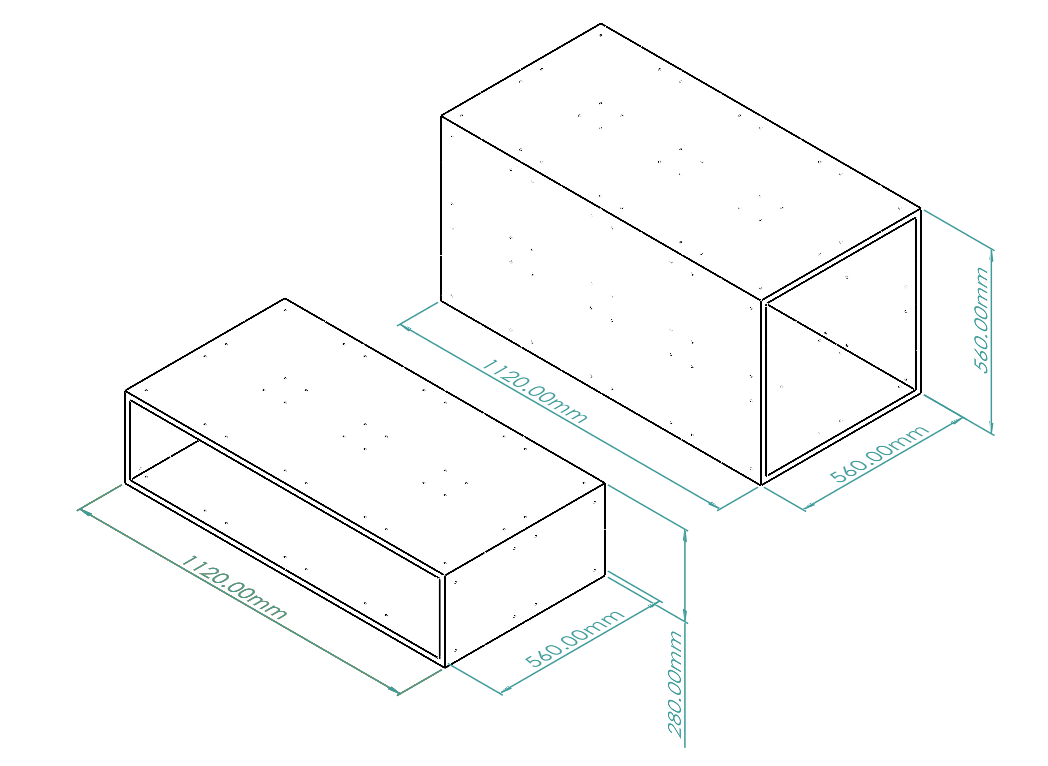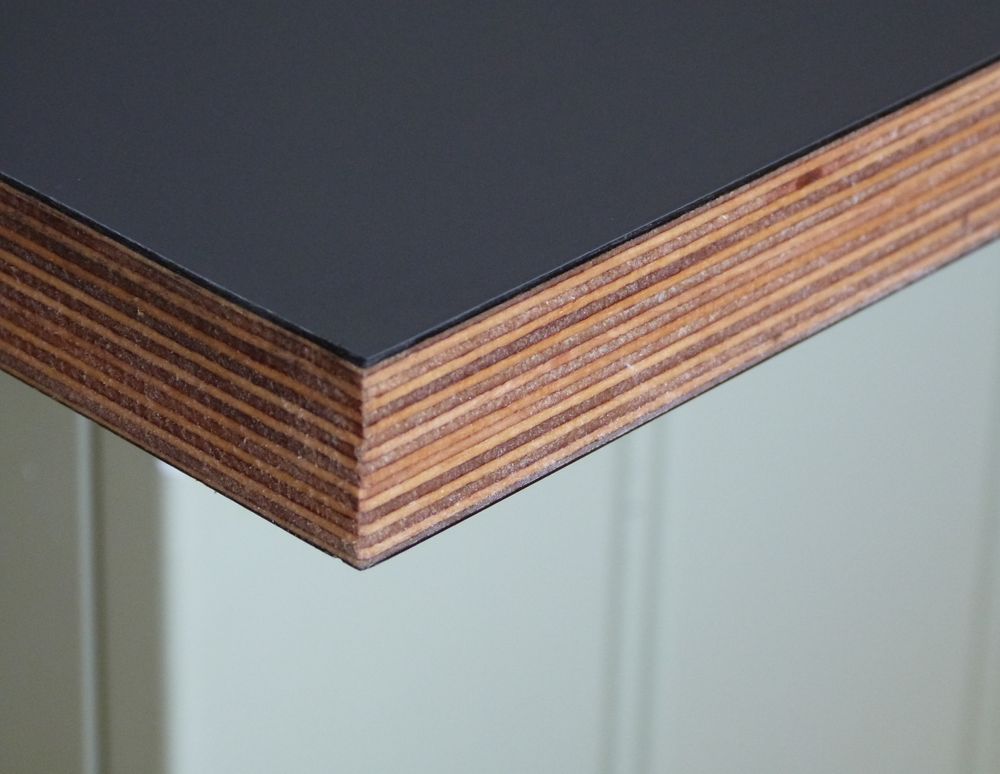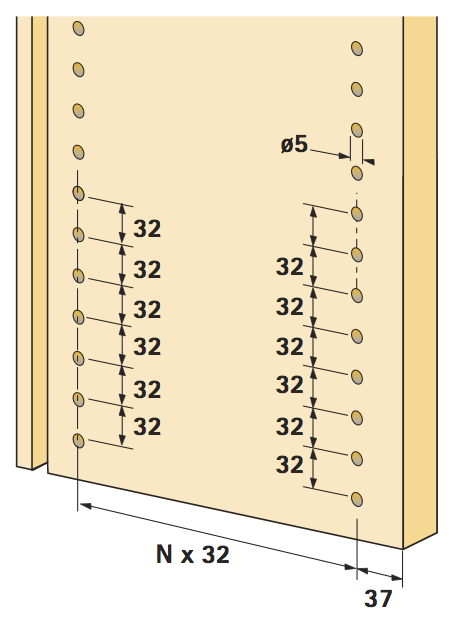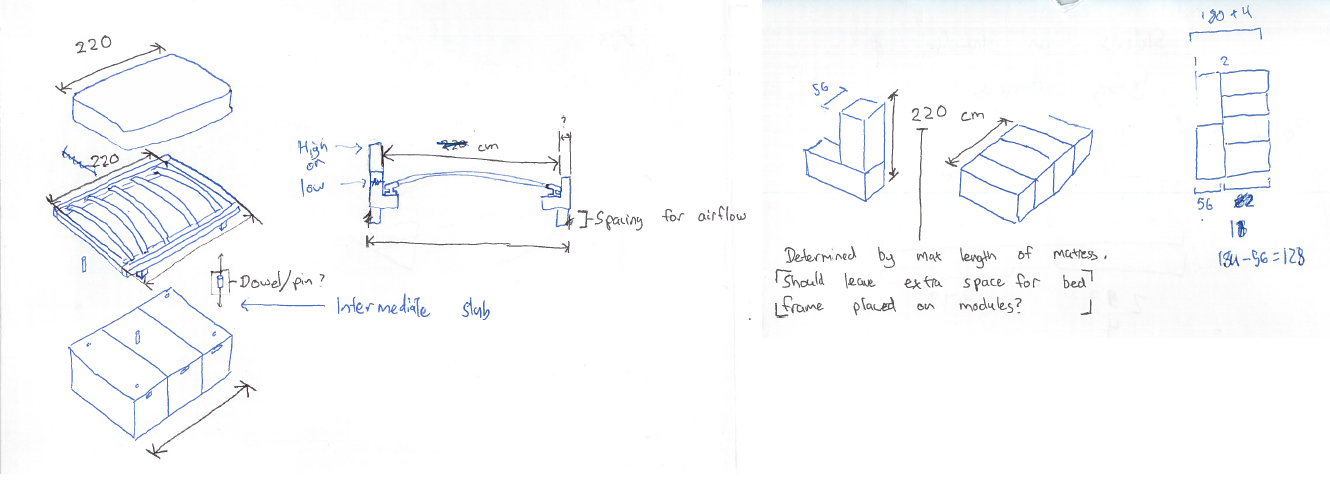
The physical aspect ModulR can be divided into 3 categories: components, which constitute modules, which in turn constitute furniture assembly. The components can further be categorized into structural and mechanical components.
You, as a customer, decide which modules you want to use to create a furniture assembly that suits your needs.
ModulR then selects the components needed to actualize your unique design. Due to the interchangeable nature of the components, ModulR can extend the lifespan of structural components (by repurposing the aesthetically damaged components to more hidden functions) and minimize unused components in storage. This is one of the aspects of ModulR that increases sustainability and cuts costs.
There are two sizes of structural modules: 560x560x1120mm (with a proportionality of 2:2:4) and 280x560x1120 (proportionality of 1:2:4). These dimensions fulfill the goals of ModulR which are:


To ensure longevity of modules, and therebye allow ModuleR customers to enjoy to a sustainable furniture ownership at a relatively low cost, robustness of components is critical. For this reason, quality components are sourced from manufacturers in Latvia, where EU regulations prescribe a sustainable way of creating.
Birch plywood has several advantages over other plywoods, including greater strength, durability, shrinkage resistance, and environmental impact. To increase the lifespan of this plywood (while allowing customers to personalize their furniture with color variation), 0.8mm sheets of laminate are attached to either side of the plywood using a plywood laminate heat press.
Mechanical components (such as hinges, sliders, etc.) or sourced from Hettich and Blum.
Using a universal pattern consisting of 5 mm holes, with 5 mm through bolts, modules are able to be connected in nearly infinite configurations, allowing you to build a customizable and personalisable ModulR setup that fits your unique room architecture and suits your taste.
The 5 mm dimension allows the through holes to be placed over the 32mm system (which also uses 5mm) holes. This simplified design makes the production process more efficient, helping ModulR to keep the cost down.
Through-bolts can be used again and again, allowing ModulR to maximize the life of the module, and help the environment. Furthermore, they are robust, cheap, and don’t damages the module (such as weft nuts, which scar the material).

Using cam nuts and cam bolts as the connection method for connecting pieces within the module is the optimal solution, since it can be used repeatedly.
Competing companies such as IKEA use less durable wood, such as chipboard. This leads customers to experience a weakened fastening purchase over time. With ModulR, high quality birch plywood is used, which is known for it’s comparably higher density and stiffness. This allows the cam nuts and cam bolts to be fastened securely every time.
The connection point of the cam screw is a plastic thread which can be replaced, minimizing damage to the plywood module.
Using the standardized 32 mm on the inside of the module allows for one type of component to be used for multiple module types. Door hinges, drawer glides, shelf dowels and many other mechanical components (from major hardware suppliers such as Blum or Hettich) can be used on this one system. This allows ModulR to minimize the amount of unused components in storage, therebye keeping the costs down for students.










